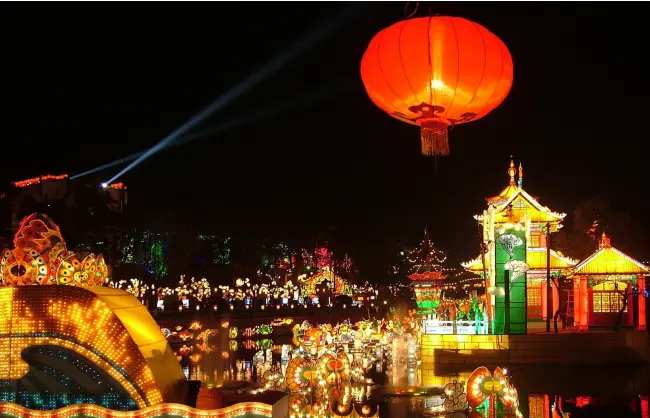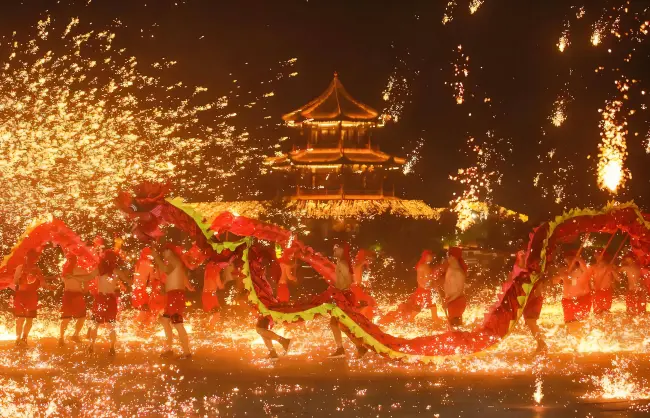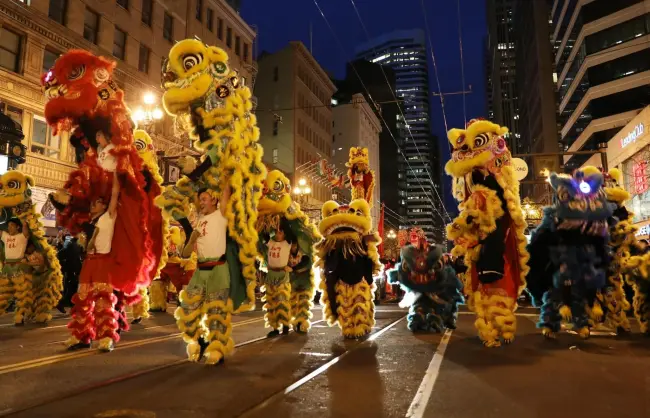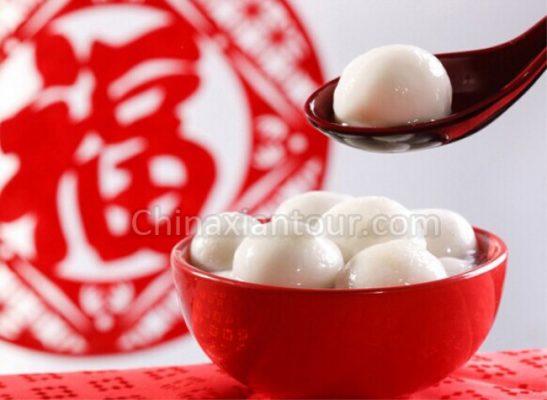Chinese Lantern Festival (Yuanxiao Festival), also known as the Shangyuan Festival, the Little First Moon, Evening of the Lantern Festival, is one of the traditional festivals in China. It is celebrated on the 15th day of the first lunar month every year. The Lantern Festival originated from the ancient folk custom of turning on lights to pray for blessings, with a long history and was already valued as early as the Western Han Dynasty.
The Lantern Festival (in Chinese: 元宵节) pushes the celebration of the Spring Festival to another climax, and also marks the end of the Chinese New Year period. People celebrate the Lantern Festival by watching lanterns, guessing lantern riddles, eating Yuanxiao (Tangyuan), performing dragon and lion dances, and other customs, which symbolize reunion, happiness and fulfillment. Chinese Lantern Festival not only carries profound cultural significance, but also is an important part of traditional Chinese culture. Welcome to start your China tours to experience the charm of traditional Chinese culture!
Chinese Lantern Festival Dates
The date of the Lantern Festival is fixed in the lunar calendar, that is, the 15th day of the first lunar month, but the date in the Gregorian calendar changes every year, usually from early February to early March. The Chinese Lantern Festival date in 2025 is February 12th.
| Year | Lantern Festival Date |
| 2024 | February 10 |
| 2025 | February 12 |
| 2026 | March 3 |
| 2027 | February 20 |
| 2028 | February 9 |
* Please note that the Lantern Festival is not a public holiday in China, not because it is unimportant, but too close to the Spring Festival.
Origins of Lantern Festival
According to the ancient calendar, the first month is the “yuan” month of the lunar calendar. The ancients called night “xiao”. The 15th day of the first month is the first full moon night of a year, so it is called “Yuanxiao Festival”. There are many explanations about the origin of Chinese Lantern Festival:

Emperor Wen of Han commemorated the suppression of Lü’s rebellion
One explanation is that the Lantern Festival originated from Emperor Wen of the Han Dynasty to commemorate the suppression of Lü’s rebellion. According to records, after the death of Emperor Hui of Han, his mother Lü Zhi usurped the throne, and the Lü clan controlled the government. After Lü Zhi’s death, Zhou Bo, Chen Ping, and others worked together to sweep away the various Lü clans in 180 BC and proclaimed Liu Heng as emperor, known as Emperor Wen of Han.
The day of pacification falls on the 15th day of the first lunar month. To celebrate, Emperor Wen goes out of the palace every year on this night to have fun with the people. Unlike other traditional festivals which emphasize “family reunion”, the Lantern Festival emphasizes more “national celebration”.
The Western Han Dynasty offered sacrifices to the Taiyi God
As early as the Western Han Dynasty, Emperor Wu of Han lit lanterns on the 15th night of the first lunar month to worship the God of Tai Yi (Tai Yi means the god who governs everything in the universe). The worship began at dusk and lasted until dawn. This is regarded as the precursor of the Lantern Festival. It is said that when Sima Qian created the “Taichu Calendar”, he had identified the Lantern Festival as a major festival.
Origin of Taoism
According to the Taoist concept of “Three Yuan”, the 15th day of the first lunar month is the Shangyuan Festival, which is the birthday of the Heaven Emperor in charge of the heavenly realm and a day for praying for a good harvest, happiness, and good fortune. Therefore, people usually hold various celebration activities on this day, such as lighting lanterns, setting off fireworks, etc., to pray for the protection of the Heaven Emperor.
Origin of Buddhism
There is another saying that the lantern custom of Chinese Lantern Festival is related to the introduction of Buddhism. After Buddhism was introduced to China during the Eastern Han Dynasty, it gradually integrated with local culture. Emperor Ming of Han issued a decree to promote Buddhism by “lighting lanterns to pay respects to Buddha on the Shangyuan night”.
During the Tang Dynasty, the Buddhist tradition of “lantern festival” began on the 15th day of the first lunar month to convey light and wisdom, and pray for a year of peace and good fortune. This custom gradually became an important part of the Lantern Festival.
Evolution of Torch Festival
Another saying is that the Lantern Festival originated from the burning sacrifice in the pre-Qin period, that is, people burn torches to pray for good weather and exorcise evil spirits. This custom gradually evolved into the Lantern Festival. Since the Sui, Tang and Song Dynasties, the Lantern Festival has become even more popular.
In the Sui Dynasty, the Lantern Festival on the 15th day of the first lunar month was unprecedented. In the Tang Dynasty, it was legal to set up lanterns on the Lantern Festival. In the Song Dynasty, the most lively and grand festival was the Lantern Festival. During this period, not only the lights were shining, but also the streets were filled with songs and dances. Even the emperors enjoyed happiness with the people.

How to Celebrate Lantern Festival: Traditions & Activities
Chinese Lantern festival has rich and colorful traditional customs, mainly including watching lanterns, eating Yuanxiao, guessing lantern riddles, setting off fireworks, dragon and lion dances. There are other distinctive celebration customs in different regions of China. You can travel to Beijing, Shanghai, Xi’an, Chengdu, Nanjing, Quanzhou or other famous Chinese cities to embark on your Chinese Festival tours.
Watching Lanterns
Watching lanterns is one of the important activities of the Lantern Festival, which originated in the Han Dynasty and flourished in the Tang and Song Dynasties. In the past, it started from the 13th day of the first lunar month when the lights were on and ended on the 18th day when the lights were off.
During the Lantern Festival, lantern exhibitions are held all over China, attracting countless tourists to watch beautiful lanterns with different shapes and colors. Enjoying lanterns is not only a recreational activity, but also a way to inherit and promote traditional culture. You can shoot a lot of amazing images of Chinese Lantern Festival.
Also Chinese Valentine’s Day
Lantern Festival is also a good opportunity to make friends. Unmarried men and women can find a mate for themselves while watching lanterns. During the Lantern Festival, it is also the time for young men and women to meet their lovers, so Lantern Festival can be said to be the authentic Chinese Valentine’s Day.
Guessing Lantern Riddles
Guessing lantern riddles is one of the special activities of the Lantern Festival, which originated in the Song Dynasty and has been loved by people for thousands of years.
People write riddles on paper slips and stick them on colorful lanterns for everyone to guess and solve. This cultural and entertainment activity can not only increase knowledge and inspire wisdom, but also add festive atmosphere.
Eating Yuanxiao
Eating Yuanxiao is an important custom of Chinese Lantern Festival, which symbolizes reunion and happiness. The earliest record of eating Yuanxiao on Lantern Festival can be seen in the Song Dynasty.
Yuanxiao, also known as sweet rice dumpling, is a round food made of glutinous rice flour with various fillings, such as sesame, bean paste, nuts, etc. As a festival food in China, Yuanxiao is made in various ways. In modern times, Yuanxiao is increasingly refined.
√Related reading: 15 Most famous Chinese Dishes
Dragon and Lion Dances
Dragon and lion dance is a traditional Chinese folk art performance. During the Lantern Festival, grand dragon and lion dance activities will be held everywhere.
Playing the dragon lantern, also known as dancing the dragon lantern or dragon dance, has been quite common in the Han Dynasty, and is an important embodiment of the singing and dancing festival atmosphere during the Lantern Festival. Dragon dance symbolizes auspiciousness and strength, while lion dance symbolizes warding off evil and avoiding harm, and bringing good luck and prosperity. During the Lantern Festival or other celebrations, people come to cheer with lion dance. These performance forms are lively, graceful, highly romantic, and have Eastern characteristics.
Learn more about Chinese festivals on fantastic China culture tours.

Setting off Fireworks
During the Lantern Festival, people set off fireworks to celebrate. The sound of fireworks and firecrackers symbolizes warding off evil spirits, and means peace and auspiciousness in the new year. This custom began as early as the Song Dynasty.
Walking on Stilts, Land Boat Dancing
Traditional folk activities such as walking on stilts and land boat dancing are indispensable to the Lantern Festival in China.
Stilt walking is a popular folk art performance, which has appeared as early as the Spring and Autumn period. People who walk on stilts often dress up in traditional Chinese opera costumes, with heavy makeup, sing and dance.
Land boat dancing is a traditional folk performance that imitates water boating on land. It is usually performed on the Lantern Festival to commemorate the Great Yu or pray for harvest and good luck. Performers usually tie colorful boats made of bamboo and wood around their waists, imitating the movements of boats, accompanied by singing and dancing, creating a joyful and peaceful atmosphere.
Chinese Lantern Festival Food: Yuanxiao (Tangyuan)
Yuanxiao or Tangyuan (glutinous rice balls) is a kind of Chinese food cooked and eaten on the 15th day of the first lunar month in accordance with the custom. It is one of the traditional snacks of the Han Chinese, belonging to the festival food customs. On the Lantern Festival, people in Northern China “roll” Yuanxiao (元宵) and people in Southern China “wrap” Tangyuan (汤圆), which are two kinds of food with different methods and tastes.
At first, people called this kind of food “Fuyuanzi”, and later “Tangtuan” or “Tangyuan”. These names are similar to the pronunciation of “Tuanyuan”, meaning reunion, which symbolizes the reunion, harmony and happiness of the whole family.

Kind Reminder
Yuanxiao contains a lot of fat and sugar, so its calories are very high (the calories of four sesame Yuanxiao are equivalent to the calories of a bowl of rice). It is not suitable for overweight or hyperlipidemia, hypertension, gout, and diabetes patients to ingest too much. The elderly, infants and other groups with weak digestive function should not eat Yuanxiao.
Chinese Lantern Festival Celebration Around the World
Lantern Festival in Singapore
The Chinese in Singapore account for more than 70% of the total population, so Lantern Festival is also an important feast in Singapore. People will set up various lanterns on the street for everyone to enjoy and guess riddles. At the celebration of the Lantern Festival, wonderful martial arts, lion dance and Nanyin music will also be performed. But the most special is their colorful Yuanxiao.
Lantern Festival in Malaysia
The Lantern Festival in Malaysia has a special custom called “men throw bananas and women hang oranges”. On the night of Lantern Festival, single Chinese men and women flock to the riverside or lakeside. Men throw bananas and women throw oranges. They write contact numbers on the fruits in order to find a good marriage.
In the capital Kuala Lumpur, citizens will watch firework displays to celebrate Chinese Lantern Festival.
Lantern Festival in Japan and South Korea
Lantern shows are held on the streets of Kyoto and Tokyo, Japan. Lantern shows in Seoul and Busan, South Korea are also very lively, and various food activities will be held.
Lantern Festival in United States
Every Chinese New Year and Lantern Festival, Chinatowns across the United States become the most lively places. In the grand parade in San Francisco, there are not only festive Chinese floats, but also traditional Chinese lion dance, dragon dance performances, martial arts, musical instruments, and more. Firework displays at the Lantern Festival in Los Angeles and New York are also not to be missed.
Read more about Chinese traditional festivals:









